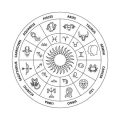Introduction: The Importance of Vastu in Indian Workspaces
In the heart of every Indian workspace, Vastu Shastra plays a vital role in shaping the energy and ambience of the environment. Rooted deeply in Indian culture, Vastu is more than just an ancient architectural science—it is a holistic approach to creating spaces that foster harmony, well-being, and productivity. In contemporary India, as offices evolve into dynamic hubs for creativity and innovation, the principles of Vastu have found renewed relevance, particularly when it comes to designing conference rooms where ideas are born and decisions are made. Understanding and applying Vastu in these workspaces is believed to enhance mental clarity, reduce stress, and invite prosperity. By integrating nature through carefully selected plants, businesses can align their interiors with positive energies, ensuring both traditional values and modern efficiency go hand in hand. This fusion not only respects cultural heritage but also offers tangible benefits for employee morale and productivity—a testament to Vastu’s enduring significance in today’s professional landscape.
Vastu Guidelines for Conference Room Placement and Design
When designing a conference room in an Indian office, following Vastu Shastra principles can enhance productivity, harmony, and positive energy flow. The ideal placement and layout of the conference room hold significant importance in shaping the collective mindset and decision-making abilities of your team. Below are some key Vastu guidelines tailored to Indian organisational culture:
| Vastu Principle | Recommended Practice | Indian Context & Benefit |
|---|---|---|
| Location | Place conference rooms in the North-West (Vayavya) direction of the office premises. | This direction supports healthy communication and ensures timely project completion, resonating with Indian business values. |
| Entrance | The entrance should ideally be from the East or North-East. | These directions invite fresh energy, considered auspicious for new beginnings and fruitful discussions in Indian offices. |
| Seating Arrangement | The head of the table (decision-maker) should face North or East while sitting. | This position is believed to provide clarity of mind and wisdom, important in hierarchical Indian organisations. |
| Shape of Table | Opt for a rectangular or oval-shaped table rather than round ones. | These shapes signify stability and order, aligning with Indian traditions of structured teamwork. |
| Windows & Ventilation | Ensure adequate natural light from the East or North side with proper ventilation. | Nourishes the space with prana (life force), fostering positivity—a core value in Indian workplaces. |
| Decor Elements | Avoid clutter; incorporate subtle Indian motifs and earthy colours like cream, beige, or light yellow. | Creates a calm, focused atmosphere suitable for consensus-building in Indian teams. |
By integrating these Vastu principles into your office conference room’s design and placement, you cultivate an environment that aligns with both ancient wisdom and modern Indian work ethics. This harmonisation not only uplifts collective morale but also supports effective communication and productivity—essentials for thriving businesses across India.

3. Top Vastu-Approved Plants for Indian Office Conference Rooms
Money Plant (Epipremnum aureum) – Pothos / Scindapsus
Local Name: मनी प्लांट (Money Plant)
Vastu Significance:
The Money Plant is widely cherished in India not only for its lush green beauty but also for its deep-rooted symbolism of prosperity and abundance. According to Vastu Shastra, placing a Money Plant in the office conference room—especially towards the North or East direction—attracts financial growth, positive energy, and harmonious business relationships. Its hardy nature means it thrives indoors with minimal care, making it a practical and auspicious choice for busy workspaces.
Bamboo Plant – Lucky Bamboo
Local Name: बांस का पौधा (Bans ka Paudha)
Vastu Significance:
Lucky Bamboo is highly regarded in both Indian and Chinese traditions as a symbol of good fortune, resilience, and peace. In Vastu, it is believed that placing bamboo stalks in water on the conference table helps foster clarity of thought, teamwork, and growth-oriented discussions. The number of bamboo stalks matters; five or seven are considered ideal for promoting health and productivity in collective spaces like meeting rooms.
Tulsi (Ocimum sanctum) – Holy Basil
Local Name: तुलसी (Tulsi)
Vastu Significance:
Tulsi occupies a sacred place in Indian homes and offices due to its spiritual aura and air-purifying properties. In the context of an office conference room, Tulsi is believed to cleanse the atmosphere of negativity and infuse meetings with focus and calmness. Placing Tulsi near a window where it can receive morning sunlight aligns with Vastu principles and promotes mental clarity during important discussions.
Snake Plant (Sansevieria trifasciata)
Local Name: नाग पौधा (Naag Paudha) / सर्पगंधा (Sarpgandha)
Vastu Significance:
The Snake Plant stands out for its robust energy-clearing abilities. As per Vastu guidelines, this plant absorbs toxins and emits oxygen even at night, creating a healthier indoor environment. It is especially suited for conference rooms with limited ventilation or natural light. The upright leaves signify upward movement and progress, supporting productivity and sharp thinking among team members during meetings.
4. Benefits of Conference Room Plants as per Vastu
According to Vastu Shastra, the placement and selection of plants in your office conference room play a vital role in channelising positive energy, fostering harmony, and enhancing productivity. In the Indian context, where meetings are often a blend of tradition and modernity, incorporating Vastu-approved greenery can deeply influence the collective mindset and energy flow within these spaces.
Energy Enhancement: Uplifting the Ambience
Plants such as Tulsi (Holy Basil), Money Plant, and Bamboo are highly recommended in Vastu for their energy-boosting properties. They are believed to absorb negative vibrations and radiate positivity, creating an environment that uplifts the spirit and encourages open communication during meetings. The natural green hues also calm the mind, making it easier to focus amidst demanding schedules.
Improved Concentration: Sharpening Focus
Meetings require mental alertness and clarity. According to Vastu, indoor plants like Areca Palm or Snake Plant help purify the air, reduce toxins, and maintain oxygen levels—factors directly linked to improved concentration. When team members breathe cleaner air and connect with nature even indoors, their cognitive functions remain sharp and they are less likely to experience fatigue.
Harmony: Fostering Team Synergy
A harmonious work environment is essential for productive collaboration. As per Vastu principles, plants placed in the north or east directions of the conference room promote unity and mutual respect among participants. The presence of healthy greenery reduces stress and creates a sense of balance, ensuring that discussions stay constructive and goal-oriented.
Summary Table: Vastu Benefits of Common Office Plants
| Plant Name | Vastu Direction | Main Benefit |
|---|---|---|
| Tulsi (Holy Basil) | North-East | Powers spiritual energy; boosts positivity |
| Money Plant | South-East | Attracts prosperity; reduces negativity |
| Bamboo Plant | East/ South-East | Brings good luck; enhances harmony |
| Areca Palm | North/East Corner | Cleanses air; supports mental clarity |
| Snake Plant | South/East Side | Purifies air; improves focus |
Cultural Resonance in Indian Offices
Selecting Vastu-compliant plants reflects respect for Indian traditions while supporting contemporary business goals. When thoughtfully chosen, these plants bridge ancient wisdom with modern needs—transforming the conference room into a vibrant space that attracts success, fosters mindfulness, and ensures every meeting is both productive and energising.
5. Placement and Care of Plants for Maximum Vastu Impact
When incorporating plants into your office conference room for optimal Vastu energy, correct placement and care are as crucial as plant selection. The direction in which you position your plants can significantly influence positivity and productivity. According to Vastu Shastra, placing lush green plants in the north or east corners of the conference room attracts prosperity and enhances mental clarity—qualities vital for productive meetings. Avoid placing thorny or spiky plants, especially near the main entrance, as these can disrupt harmonious energies.
Guidelines for Positioning
For best results, ensure that plants do not obstruct pathways or block natural light sources, as unrestricted energy flow is a key Vastu principle. Place larger potted plants like Areca Palm or Rubber Plant near windows facing east or north-east to invite fresh energy. Smaller desk-friendly varieties such as money plant or peace lily can be positioned on shelves or tabletops within sight but away from direct sunlight to prevent wilting.
Choosing the Right Pots: Terracotta Tradition
In Indian culture, terracotta pots are highly recommended due to their earthy qualities and ability to breathe, supporting healthy root growth and balanced moisture levels. These natural clay pots also resonate with Vastu’s element of earth, grounding the space and fostering stability during discussions and decision-making. If using decorative planters, opt for those in subtle shades of brown, green, or cream to maintain a calm, centered atmosphere.
Plant Care Tailored to Indian Climate
With India’s diverse climate zones, regular plant care is essential for sustained vitality. Ensure adequate watering routines according to seasonal changes—less frequent in cooler months and more attentive during summer heatwaves. Wipe leaves gently to remove dust and allow free oxygen exchange. Additionally, use organic fertilizers such as vermicompost or neem cake, both widely available across India, to enhance soil fertility without introducing harsh chemicals into your workspace.
By mindfully positioning your conference room plants and caring for them with respect to Vastu remedies and India’s unique environment, you amplify both productivity and well-being for everyone who enters the space.
6. Common Mistakes to Avoid (Do’s & Don’ts)
Frequently Seen Vastu Violations in Indian Offices
When it comes to maintaining an auspicious and productive conference room, many Indian offices unknowingly commit certain Vastu errors. Placing plants like cacti or thorny varieties is a common mistake as they are believed to bring negative energy and conflicts during meetings. Another frequent violation is cluttering the conference room with too many plants, which can disrupt the energy flow and create a sense of chaos rather than harmony. Additionally, neglecting regular maintenance of the plants—such as allowing them to wilt or collect dust—can also block positive vibrations and affect overall productivity.
Practical Tips for a Harmonious Atmosphere
To ensure your conference room aligns with Vastu principles and maximizes productivity, consider these do’s and don’ts:
Do’s
- Select lush green plants like money plant (Epipremnum aureum), bamboo, or peace lily which are known to attract prosperity and foster calm discussions.
- Place plants in the north or east direction of the conference room, as per traditional Vastu recommendations for growth and positive energy.
- Regularly water, prune, and clean your plants to keep them healthy and vibrant—this symbolizes growth and clarity in decision-making.
Don’ts
- Avoid using artificial or dried plants as they do not carry prana (life force) and may stagnate the energy in the space.
- Refrain from keeping large pots directly at the entrance; this can obstruct the inflow of beneficial energies according to Vastu Shastra.
- Never allow neglected or dying plants to remain in the room as they may symbolize stalled projects or misunderstandings among team members.
Local Wisdom: Involve Your Team
Cultivate a mindful habit among employees by encouraging everyone to participate in caring for the office plants. This fosters a collective sense of responsibility and helps maintain a balanced environment where everyone feels connected to their workspace—a true embodiment of Indian values of unity and positivity.
7. Conclusion: Bringing Vastu-Aligned Plants into Modern Indian Offices
Integrating vastu principles with thoughtfully chosen indoor plants is much more than a decorative trend—it is a time-honoured way to invite harmony, positivity, and productivity into the modern Indian workplace. As we have explored, placing vastu-aligned plants like Tulsi, Bamboo, or Money Plant in your office conference room can help balance energies, reduce stress, and inspire clear thinking during important meetings. These natural additions not only purify the air but also uplift the mood and support a sense of holistic well-being among team members. In today’s fast-paced corporate culture, embracing ancient wisdom through simple changes like introducing vastu-compliant greenery can truly transform the energy of your workspace. Let every meeting room become a space where creativity flourishes, decisions are made with clarity, and collective goals are achieved with greater ease. By respecting both nature and tradition, modern Indian offices can cultivate an environment that supports success at every level—physically, mentally, and spiritually.


